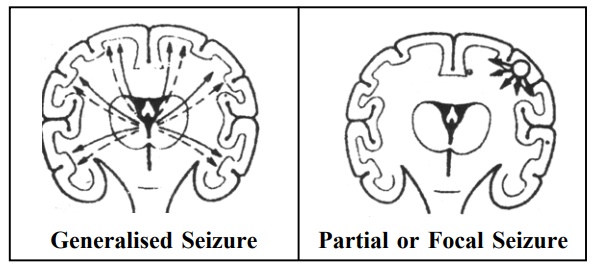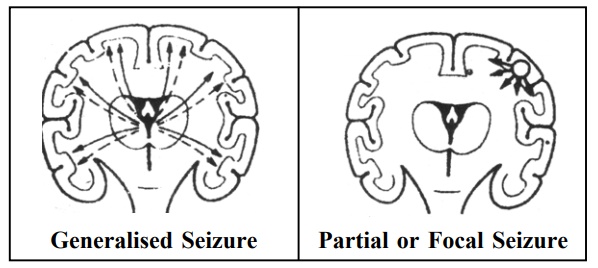Chapter: Diseases of The Brain and Nervous System(A Health Education Guide): Epilepsy
Three types of epilepsy

There are three types of epilepsy :
1. Generalized seizure.
2. Partial seizure.
3. Psychogenic-Hysteria.

These three are further divided as follows :
1. Generalized Seizure :
i. Grandmal epilepsy or seizure of the entire body: In this type of epilepsy, loss of consciousness, screaming, frothing from the mouth, tremors, tongue biting may occur and sometimes urine and stool are also passed unconsciously. After regaining consciousness, the patient remains in a semiconscious state for some time or goes to sleep He may be paralyzed temporarily.Sometimes a patient may get an inkling of the impending seizure, this is known as Aura.
ii. Petitmal: In this type of epilepsy the patient suddenly becomes momentarily blank, stunned and blacks out for a few moments.
iii. Myoclonic seizure: In these cases the person experiences sudden shock like momentary jerks in the limbs and the things held in hand may fall down, but there is no loss of consciousness.
iv. Besides these there are tonic-clonic and akinetic seizures, which are classified as Generalized seizures.
2. Partial Seizure:
i. Simple Partial Seizure: The patient remains conscious, but jerking or tingling is felt in one half side of the body.
ii. Complex Partial Seizure: If the patient loses momentary consciousness along with-* the symptoms of simple partial seizure, it is known as complex partial seizure. In this type, the patient loses consciousness or behaves abnormally for a few moments and immediately becomes normal again.
3. Psychogenic Hysteria :
Hysteria is a disease which resembles epilepsy. It is more common among women. This disease can be cured with proper treatment by a psychiatrist as well as by tackling the underlying socio - economic problem.
Febrile Convulsions :
Sometimes during childhood convulsions may occur due to high fever, which tend to subside automatically after theage of five years. But it is essential to ascertain that no damage has occurred to the brain by these convulsions. In children who get convulsions during fever, it is necessary to ascertain that they do not suffer from fever as far as possible. If fever does occur, Paracetamol or Nimesulide as well as Clobazam should be administered immediately. The medicine called Direc-2 or any other similar kind can be administered rectally if a convulsion seems imminent. It will not only prevent the convulsion, but will also check it midway. This drug can be administered every 12 hours. It is essential to prevent such seizures because frequent attacks can get converted into complex partial seizures or generalized seizures in future.
Related Topics